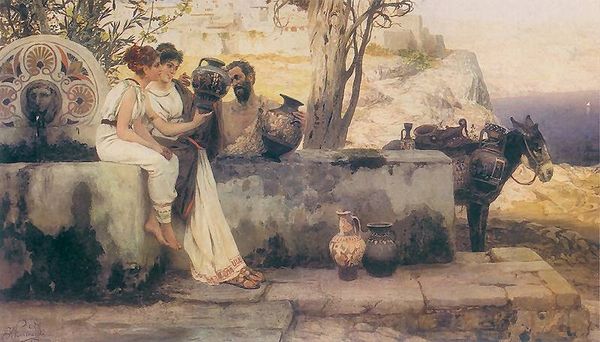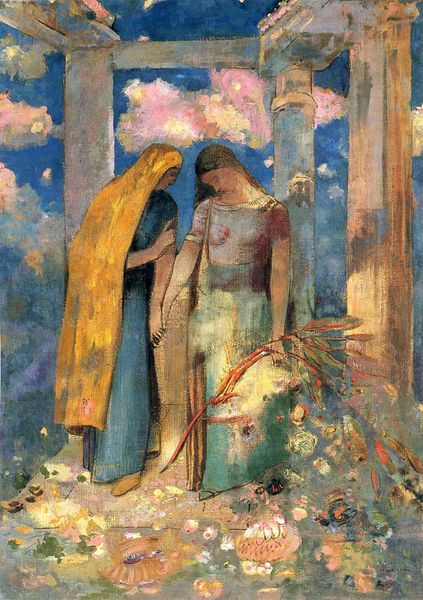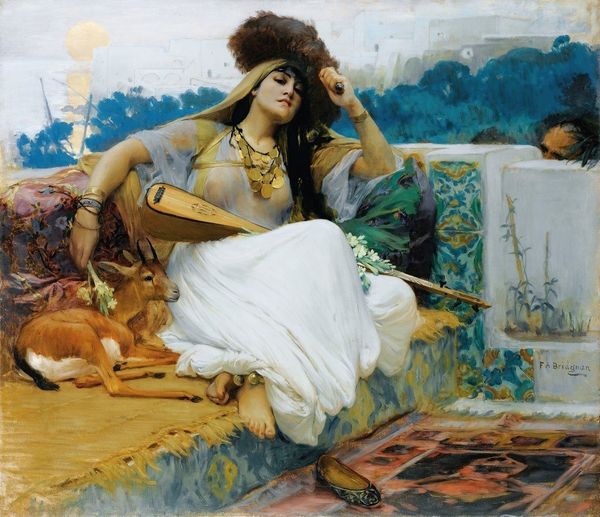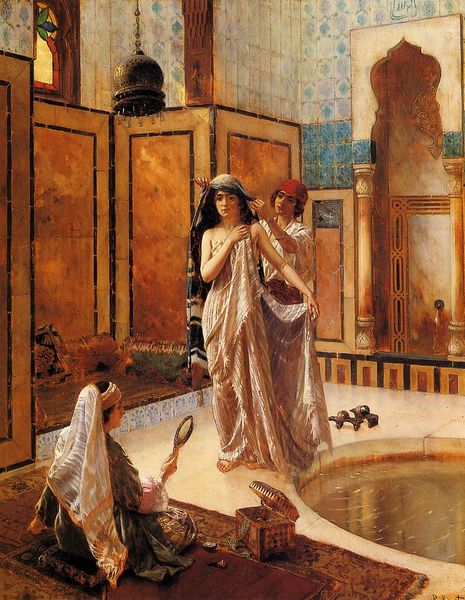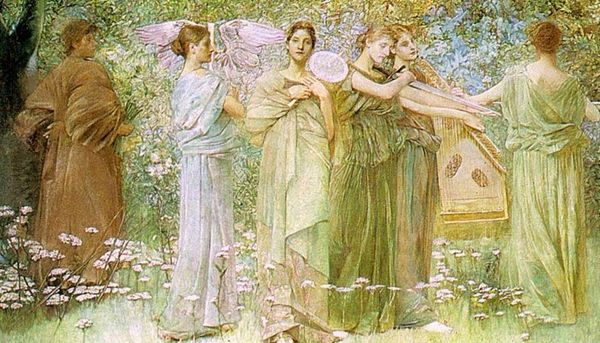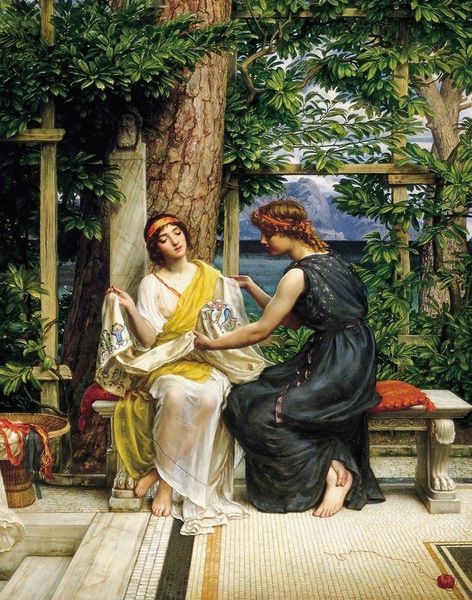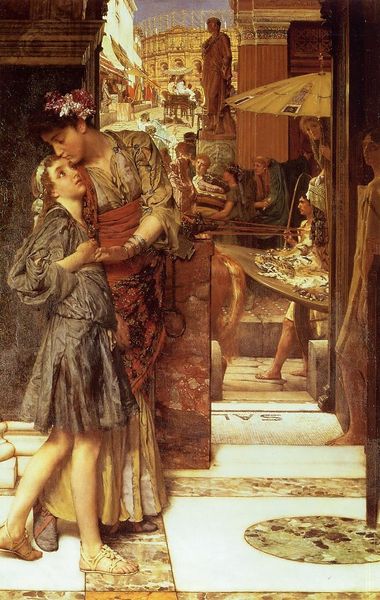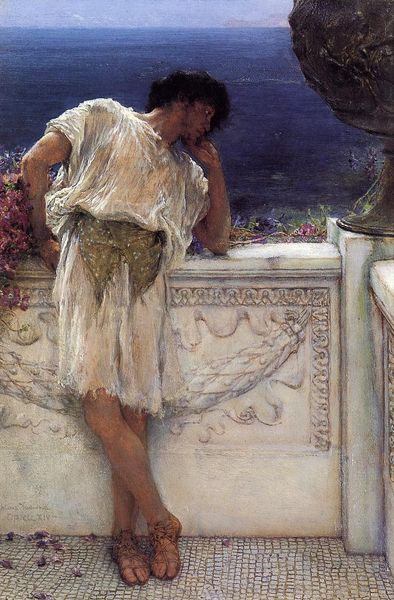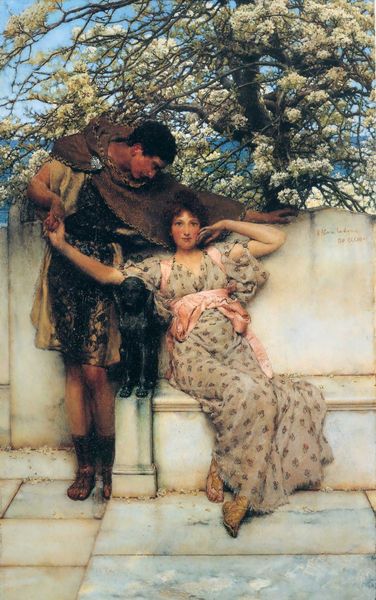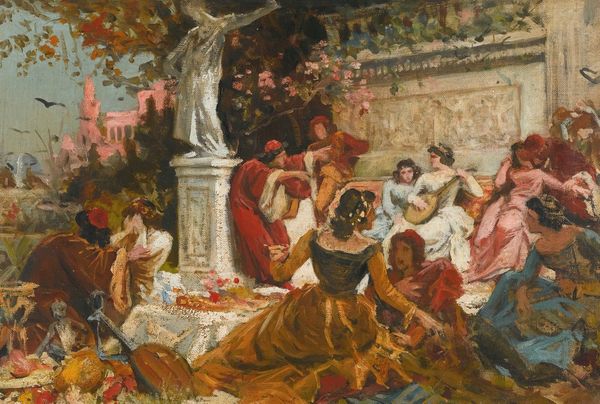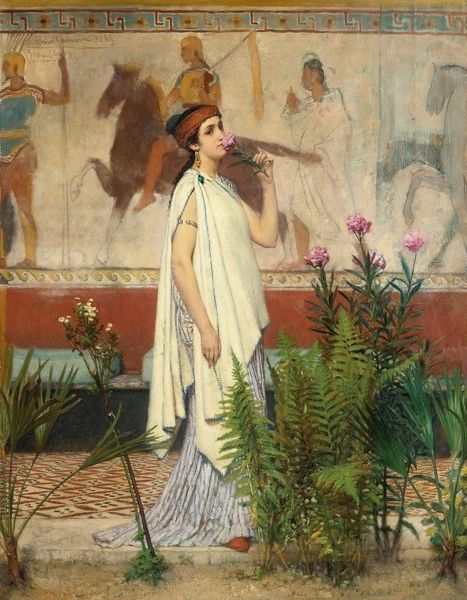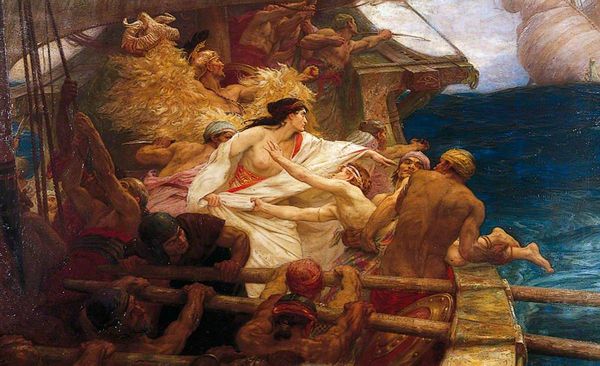
Copyright: Public domain
Curator: Lawrence Alma-Tadema’s oil-paint, “A Harvest Festival (A Dancing Bacchante at Harvest Time)” painted in 1880, invites us into a scene of ancient revelry. The warm palette gives a palpable sense of time and nostalgia. Editor: The immediate effect is almost cinematic; the perspective directs our eyes to the figure in motion, while the surrounding figures seem to pause, observing the ritual as viewers along with us. I also think the arrangement of people is superb. Curator: The dance, undoubtedly for Bacchus, carries significant cultural memory. The god’s wreath in combination with the wheat represents the changing seasons and the bounty they yield in that place. It brings forward millennia of human expression tied to this very symbol. Editor: Look at how Alma-Tadema captures the dancer's movement. Her garment almost blurs—in sharp contrast to the sharply-rendered landscape, where you can feel each sheaf of wheat in the background. This gives visual rhythm through repetition, which emphasizes dynamism and the immediacy of lived experience. Curator: Indeed. It's about the collective and continuous human experience and celebration in ritual, filtered through the romanticism of its time and through that particular artist’s point of view. Consider, too, the instrument which seems to represent more than a percussive tool – it's a social emblem. Editor: Note how the darker tones—in the figures observing and the man playing the flute on the side—frame the lighter central tones. Also the fire pit creates a grounding aspect – a visual link between earth, hearth and spirit. That tonal contrast makes this scene visually readable despite the flurry of movement, almost dividing this landscape of people in celebration. Curator: This painting really brings history alive, doesn’t it? A glimpse into a cultural expression both ancient and timeless. I hope you agree that its echoes reach our present lives, too. Editor: It’s like catching a half-remembered dream. The formal elements—the colors, compositions—reveal much about Alma-Tadema’s intentions in evoking and romanticizing a Bacchic rite of harvest, but more importantly, a moment in history and a perspective on timeless revelry.
Comments
No comments
Be the first to comment and join the conversation on the ultimate creative platform.

